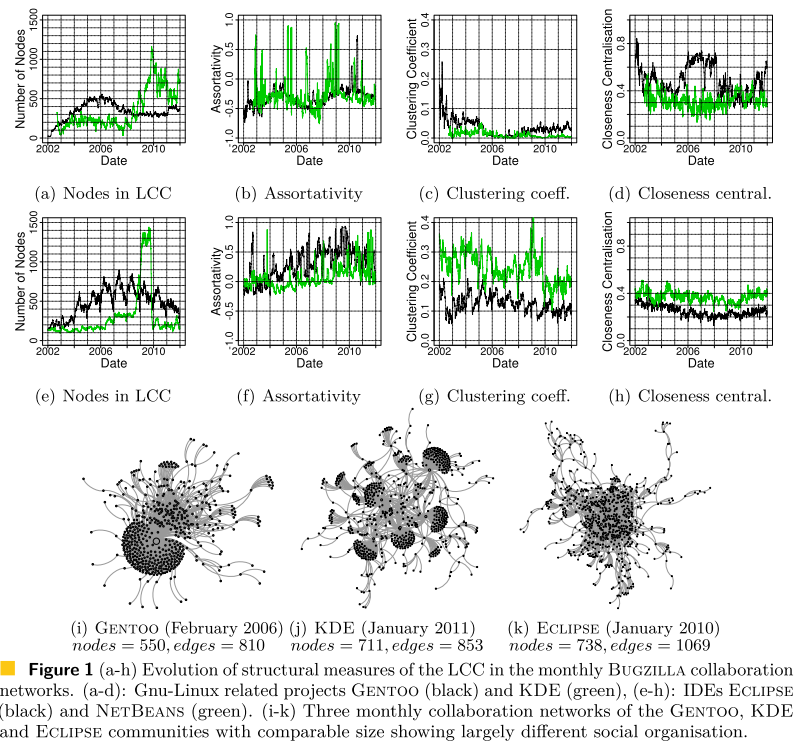|
A Quantitative Study of Social Organisation in Open Source Software CommunitiesThe success of open source projects crucially depends on the voluntary contributions of a sufficiently large community of users. Apart from the mere size of the community, interesting questions arises when looking at the evolution of structural features of collaborations between community members. In this article, we discuss several network analytic proxies that can be used to quantify different aspects of the social organisation in social collaboration networks. We particularly focus on measures that can be related to the cohesiveness of the communities, the distribution of responsibilities and the resilience against turnover of community members. We present a comparative analysis on a large-scale data set that covers the full history of collaborations between users of 14 major open source software communities. Results at a glanceOur analysis is based on a comprehensive data set collected from the bug tracking communities of 14 major OSS projects. We particularly look at the social organisation from the perspective of time-evolving networks and highlight how projects - although very similar in terms of size, problem domain and age - a) largely differ in terms of clustering coefficient, assortativity and closeness centralisation and b) that some of the projects show an interesting dynamics with respect to these measures that cannot be attributed to mere size change effects.
Figure 1 shows the evolution of the number of nodes in the largest connected component, its assortativity, clustering coefficient and closeness centralisation for the four OSS communities Gentoo, KDE, Eclipse and NetBeans. ConclusionThe long term goal of the project into which this study is embedded is the provision of multi-dimensional quantitative indicators for the dynamics of the social and technical organisation of OSS projects that are correlated with project performance and that can thus be reasonably included both in the management and evaluation of OSS projects [11, 14, 9]. Such indicators can be particularly useful when wanting to make an informed decision about which OSS project to invest in or rely on. Furthermore, due to the distributed nature of the collaborations, individuals often lack a macroscopic perspective on evolving communication and coordination structures, even though these can critically influence long-term success. An inclusion of suitable indicators in community management platforms like e.g. Bugzilla can assist the community in determining risks and allow project managers to timely react by shifting responsibilities, fostering information flow or changing organisational procedures.
Selected PublicationsA quantitative study of social organisation in open source software communities, 2012
Zanetti, Marcelo Serrano;
Sarigol, Emre;
Scholtes, Ingo;
Tessone, Claudio Juan;
Schweitzer, Frank
|
||
